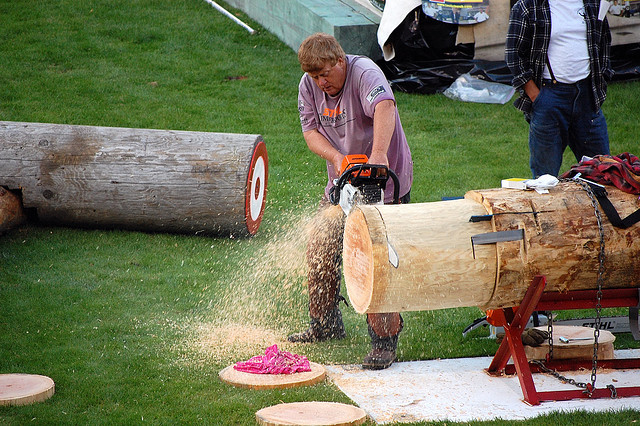 As the old joke goes, the only thing worse than finding a worm in your apple is finding half of a worm in your apple. Likewise, it’s natural to react with horror to the prospect of finding a finger in one’s food (although it may not compare to the shock of finding a body in one’s Rice-a-Roni, were such a thing possible). In fact, the paranoia of disembodied “bonuses” has spawned a genre of urban legend in which food is adulterated by some body part, usually a finger. This legend probably originated in 1987, when the Ureno brothers found what they believed to be a severed finger (and fingernail) in a can of menudo…only to learn after a media frenzy that certain connective tissues in tripe closely resemble fingers.
As the old joke goes, the only thing worse than finding a worm in your apple is finding half of a worm in your apple. Likewise, it’s natural to react with horror to the prospect of finding a finger in one’s food (although it may not compare to the shock of finding a body in one’s Rice-a-Roni, were such a thing possible). In fact, the paranoia of disembodied “bonuses” has spawned a genre of urban legend in which food is adulterated by some body part, usually a finger. This legend probably originated in 1987, when the Ureno brothers found what they believed to be a severed finger (and fingernail) in a can of menudo…only to learn after a media frenzy that certain connective tissues in tripe closely resemble fingers.
As it turns out, you might be more likely to find a finger in your engine or air conditioner than you are to find one in your can of baked beans: the occupational hazards associated with repairing air conditioning systems and motor vehicles merit some attention, too. This post, however, is dedicated to the far more common cuts and lacerations and the workers who are at highest risk for sustaining serious cut-related injuries:
The occupation types that share the third place bracket have a cut/laceration incidence rate between 26 and 30. This bracket encompasses a wide range of jobs, including landscapers, firefighters, large vehicle mechanics, food service workers, and repairmen.
For many workers in this incidence range, the most common route to a cut or laceration involves mishandling or malfunction of equipment. For instance, landscapers are usually injured when a part of the body is caught in a mower or wood chipper or when they cut themselves with a chainsaw or power trimmer. Firefighters generally sustain such injuries while fighting fires, during training drills, or while transporting injured people to safety/medical facilities—in part because their line of work is inherently perilous, and in part because the injured persons they interact with are more likely to behave violently. Lacerations constitute 16% of injuries to mechanics; and over 1,000 servers were injured in 2008 when chipped glasses or dangerous utensils slipped in their fingers.
Those occupations whose incidence rates for cuts and lacerations hover at about 40 are construction workers, carpenters, and auto mechanics. Lacerations in these fields are the third leading cause of days off work and can cost as much as $6,000 in treatment and lost productivity. The primary causes of cuts and lacerations in construction are inadequate training and/or safeguards, haste, lack of protective gear, clutter, compromised visibility, and poorly-maintained equipment.
Like construction workers, woodworkers are exposed to dangerous equipment on a regular basis, sometimes when their mental faculties aren’t in optimal working order. Sanders present a particular hazard, as their grainy surfaces are not only an abrasion/laceration risk per se, but can easily cling to clothing, hands, etc. and pull them into the roller. Loading equipment and handheld tools can cause lacerations and cuts when proper distances are not maintained. (Saws, drills, and other tools designed to cut and puncture are naturally laceration hazards to an extent, although these machines may often cause more serious injuries.)
It may come as a surprise (to those who never believed the urban legend in the introduction) that by far the most dangerous occupation type in terms of cut/laceration risk is the food service industry. While the notoriously dangerous construction field has a laceration incidence rate of 39.5, that number is 83.2 for food service workers—more than twice the rate for construction workers. Whether one is chopping parsnips or accessing cans of finger-free menudo with a box cutter, there are many opportunities to get hurt while preparing food commercially.
Regardless of their field of expertise, all workers deserve treatment when something goes seriously wrong on the job. Unfortunately, it is an unusually lucky employee who obtains adequate workman’s compensation without any sort of bargaining. Ergo, it makes sense for any injured person to consult with a personal injury attorney so that they know what they can expect and how to seek it. Because many personal injury attorneys offer free initial consultations, and because all of them are paid on contingency, the injured worker has only to gain from asking for a second opinion. To contact Utah personal injury attorneys Good Guys Injury Law, call (801) 506-0800.
Image courtesy of Kathryn Decker